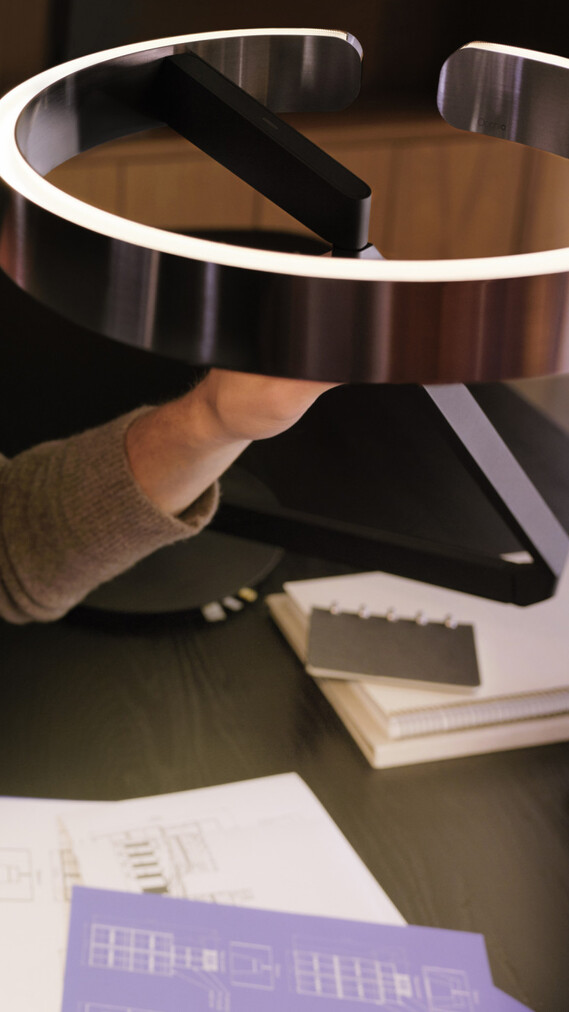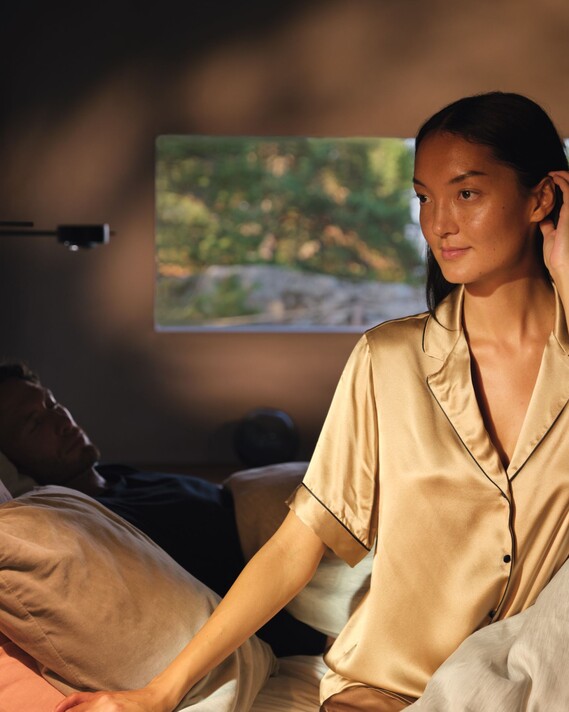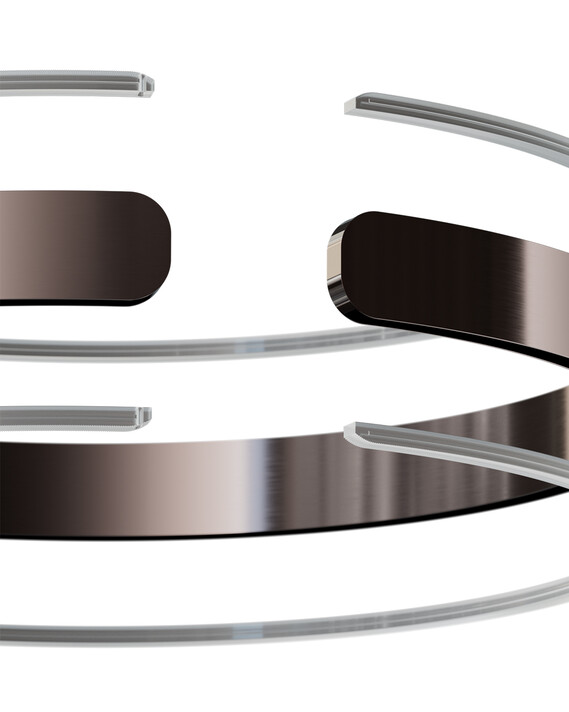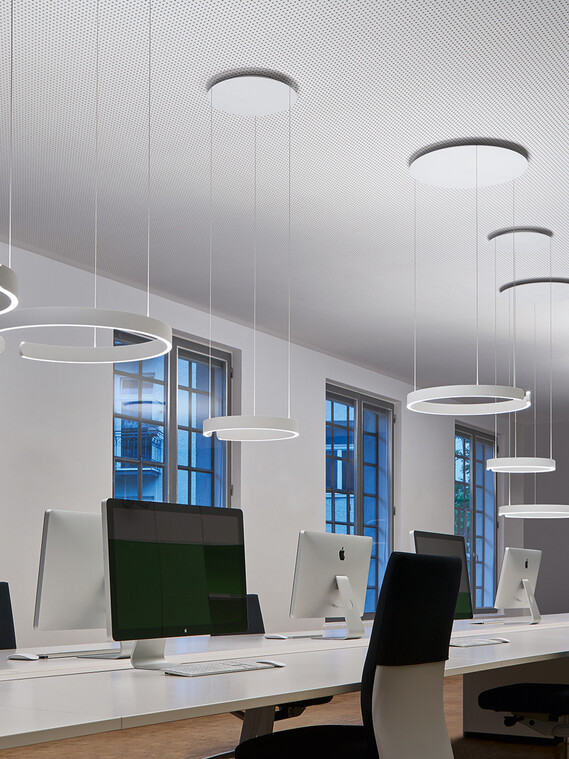


Why Occhio luminaires don't dazzle you
Glare can be prevented when luminaire design is perfectly combined with a modular lighting system. Our design, in combination with high-quality optical lenses and light inserts, ensures glare-free light.
Our optics and inserts determine the light output. They cut off the light and focus or scatter it, thereby evening out the light output to create perfect harmony. This prevents troublesome glare from occurring and creates a pleasant perception.

Avoid glare and promote concentration
At home, glare-free lighting is primarily used to create a sense of well-being, but in office spaces, luminaires must meet glare control requirements. This is because if the eye is dazzled, this reduces concentration. The benchmark for glare control is the UGR value. UGR stands for Unified Glare Rating.
The value describes the psychological glare effect of lighting from a certain position of the observer. A UGR value below 19 is important in office environments. All Occhio luminaires of course fulfil this requirement.
What you need to know about glare control
Shielding angle and reflection – how glare occurs
Glare is caused when there is excessive contrast. Our eyes are very good at evening out extreme lighting conditions and contrasts. They do this by adjusting brightness and dark areas extremely quickly. If the ratio between bright and dark is too great, it results in glare. Having luminaires adjusted to the right beam angle is crucial for preventing glare: their shape and optical components must be intentionally configured so that the light source never shines directly into your eyes. This will prevent the light source from disrupting your vision.
The subtle difference: direct glare and reflective glare
There are two types of glare: direct glare and reflective glare. Direct glare occurs when light from the sun or a light source shines directly into our eyes. This happens for example, when the sun is quite low, or a luminaire is positioned inappropriately. Reflective glare, however, is defined as disruptive reflections of light that occur on shiny or reflective surfaces in particular. This means that preventing reflections limits glare.



